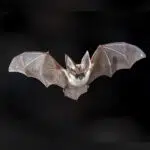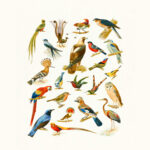International Bat Night is observed on the last full weekend of August every year. This event is observed in the United States of America and Europe mainly. However, 30 countries have come together to spread awareness on bats and their habitat, and bust some myths. Several nature conservation agencies and NGOs, especially in Europe, work towards imparting knowledge to the public on the lifestyle and habits of bats via different mediums such as presentations, exhibitions, and bat walks.
History of International Bat Night
International Bat Night is observed by around 30 countries to bring to light the need for preserving this nocturnal species. International Bat Night started in 1997 as a way to inform the public about the needs and benefits of bats in nature. This annual observance helps to promote the good image of bats and busting some myths and providing clarity on them.
It is imperative that we know more about bats as there are over 1,400 species of bats across the world. Bats are the second largest order of mammals after rodents and make up about 20% of all classified mammal species in the world. These creatures can be found on nearly every part of the planet apart from extreme deserts and polar regions.
Humans are often afraid of bats due to the general misconception that they are harmful. While they do have the potential to spread rabies, not all bats are out there to attack you. Yes, bats do feed on blood, but mostly they feed on insects and it’s a good thing as it helps to keep the insect population in check and maintains a balance in nature.
Bats are even popular in pop culture. Some portray them as dark and scary while others portray them as fun creatures. The most popular and favored representation of bats that remains significant is the superhero Batman and the comics and movies based on the character. That has helped to put bats in a positive light to a certain extent in the minds of many.
International Bat Night timeline
Carl Linnaeus classifies the seven bat species he knows of in the order Primates.
German naturalist Johann Friedrich Blumenbach gives bats their own order, Chiroptera.
The discovery of an early fossil bat from the 52-million-year-old Green River Formation indicates that flight evolved before echolocation in bats.
Paleontologists Kevin Padian and Kenneth Dial present research that some of the earliest bats had hindlimbs that flexed to the side.
International Bat Night FAQs
How do bats see at night?
Bats are nocturnal and hence they must possess the necessary skills to see at night. They use echolocation which means they make noises and wait for the sound waves to bounce back off objects as an echo. This helps them to hunt for insects at night.
Are bats attracted to light at night?
Bats are known to be sensitive to light while hunting at night. Bats generally get attracted to artificial light only because insects tend to flock to them. However, by themselves, they would avoid artificial light.
How many hours does a bat sleep?
Surprisingly enough these flying mammals end up spending nearly 20 hours of every day asleep.
How To Observe International Bat Night
Visit a bat conservatory
On International Bat Night you can visit a local bat conservatory. They often have bat walks or informational sessions lined up. You can attend one of these and gain knowledge of these creatures.
Go to a natural bat habitat
International Bat Night can be a great motivator to visit the natural habitat of bats. Spend the night camping there, observing the stars, and simply looking out for bats. Ensure you do not cause obstruction to their routine and keep a safe distance.
Read up about bats
There are so many species of bats and so much to know about them. You can spend International Bat night reading about these flying mammals and then sharing the knowledge you gained with others.
5 Interesting Facts About Bats
Life expectancy
Bats can live more than 30 years.
Eating habits
Bats can easily eat up to 1,200 mosquitoes an hour.
Baby bats
Baby bats are called pups and most bats end up having only one pup a year.
World’s smallest bat
The world’s smallest bat is smaller than a thumbnail and weighs less than a penny.
World’s largest bat
The world’s largest bat is the "flying fox," which has a wingspan of up to six feet and lives on islands in the South Pacific.
Why International Bat Night is Important
They help to balance nature
Bats play a pivotal role in maintaining a balance in nature. They eat insects that could potentially spread diseases, damage crops, or wreak havoc. Furthermore, bats even help in dispersing seeds through their feces. One of the major factors involved in the reforestation of tropical rainforests is the spread of guano seeds through bats.
They are typically harmless
Bats are some of the most misunderstood species. Owing to their typical representation in pop culture, people think of bats as all things dark and creepy. However, they are mostly harmless to people. In reality, only three of the thousand-plus species are actually bloodsuckers.
Bats have excellent vision
Bats are active at night and it is essential they have excellent vision to see. They do have better vision in the day and night than most humans. They emit a high pitch sound that bounces off of objects around them and helps them to pinpoint the exact location of insects.
International Bat Night dates
| Year | Date | Day |
|---|---|---|
| 2024 | August 24–25 | Saturday–Sunday |
| 2025 | August 30–31 | Saturday–Sunday |
| 2026 | August 29–30 | Saturday–Sunday |


















